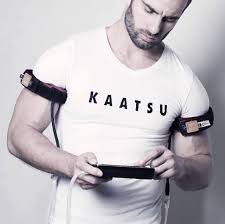The Wall Street Journal had a few stories today about exercise, but two stories in particular caught my eye.
The first story was about a new type of exercise training that originated in Japan known as Kaatsu. One of its selling points is that it allegedely offers better results in less time and with less effort. Here is an explanation of Kaatsu from the article:
With Kaatsu, people do a light workout while wearing pressurized belts, first on the upper arms and then on the legs. The belts are inflated and pressure is regulated using a machine—“ka” means add and “atsu” means pressure. The workout can consist of normal exercises such as squats, push-ups or lifting light weights, and might last for five to 30 minutes. Kaatsu was developed by 67-year-old Tokyo body builder Yoshiaki Sato.
The pressurized belts cause the limbs to fill up with blood. Muscles are activated and lactic acid accumulates, say some researchers who have studied exercise when blood flow is restricted. That tricks the brain into thinking the body is doing more intense exercise, which encourages muscle growth and burning of fat and helps the body repair injuries faster, say proponents of the technique. Other researchers say the ways in which restricting blood flow helps encourage muscle growth, even with a light workout, aren’t completely understood.
The story also includes a brief video you can watch to see Kaatsu in action. There are also several YouTube videos on Kaatsu, but I did not find any of them that helpful (either they were too scientific or too brief or poorly made).
I have never heard of this type of training, but my concern is with the fact that it seems to work by restricting blood flow, which seems potentially dangerous, particularly for people with heart issues. Because of this, I don’t think I’ll be trying it any time soon.
The other story looked at how popular exercise has gotten in China with women. The subtitle of the story was “Women increasingly are rejecting the traditional softer silhouette in favor of a more toned look.”
The story noted not only the tremendous growth in the number of women working out in China, but the significant amount of money they are willing to spend on fitness-related gear. As a result, companies such as Nike, Adidas, and Lululemon are experiencing strong growth for their products in China.
But what I found most interesting in the story was a link back to a previous story that looked at how committed the Chinese government is to the overall fitness movement in China. Currently, the fitness industry accounts for less than 1% of China’s GDP, but the country would like to see that number grow.
To encourage fitness among its citizens, the People’s Liberation Army released a five-minute workout video that involved stretching, vigorous marching and arm pumping. While the narration of the video is in Chinese, it seems easy enough to follow along with if you desire.
According to the PLA Daily, China’s military newspaper, “It (the workout) absorbs aspects of popular dance and Chinese tai-chi, as well as other factors. The content is novel and original; it has its own distinct style, and the movements are masculine and vigorous.”
After watching the Chinese exercise video, it seems like it would be a good warmup routine for a longer exercise session, but I do like the variety of movements that the routine involves. I think I’ll give the routine a try in the near future.
After watching the two videos, I think I’ve come up with a brilliant way to ease the tension that often exists between the two countries.
Why not create a joint exercise program that entails doing the PLA routine, but while wearing the equipment associated with the Kaatsu training?
Perhaps it can be called PLAatsu.
I think the idea seems worthy of a Nobel Peace Prize…



